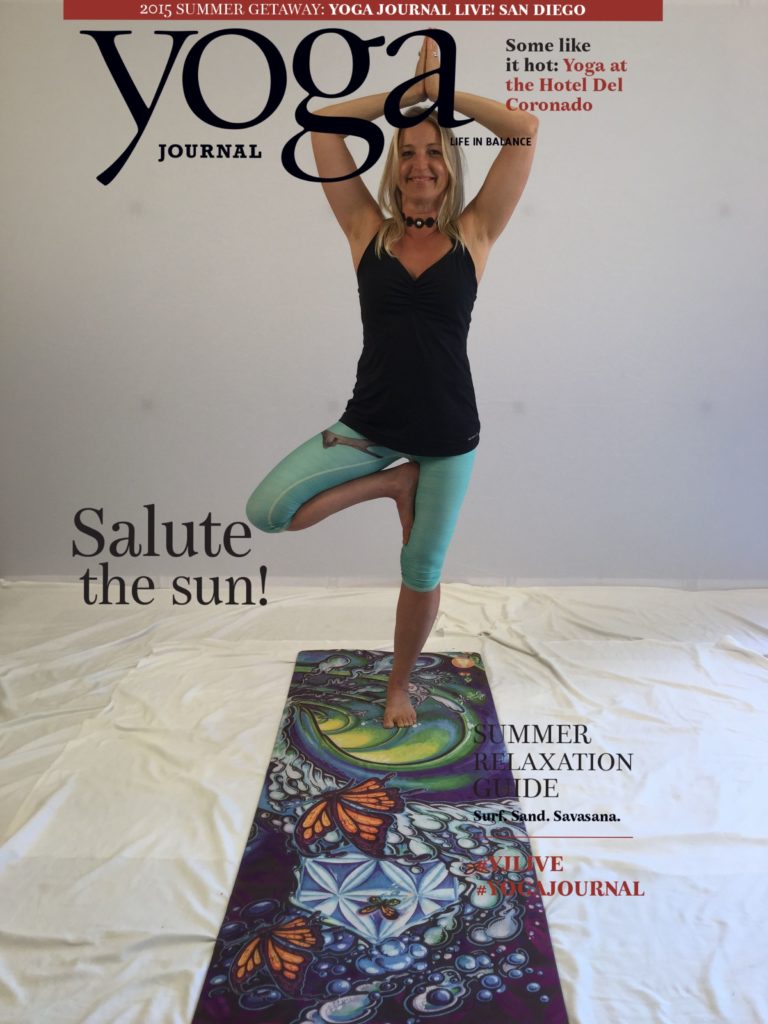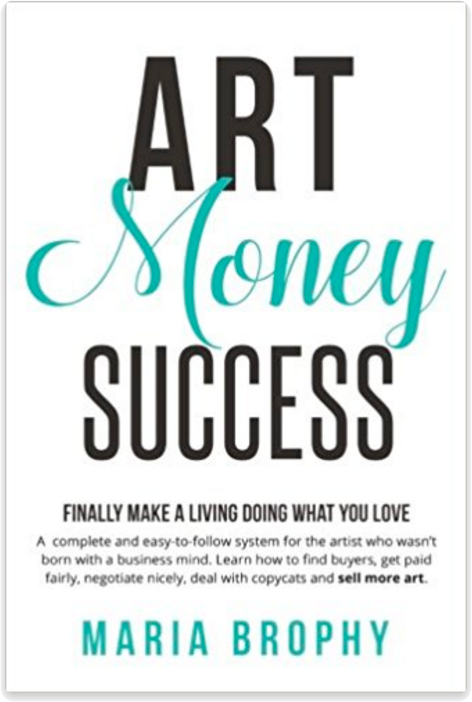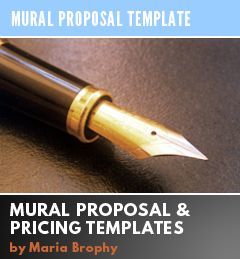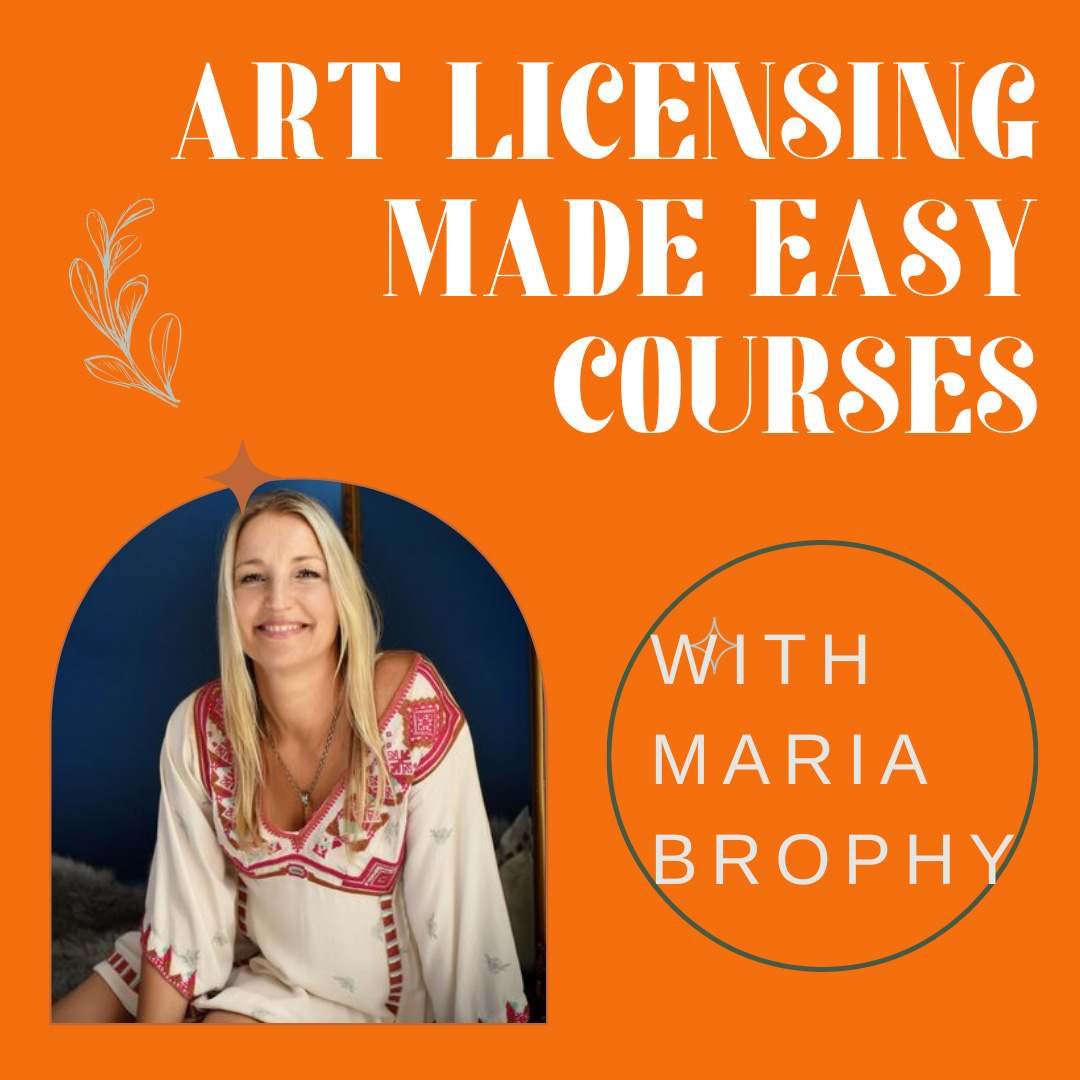(To learn about art licensing: sign up for my FREE ten week series called “ART LICENSING MADE EASY” which teaches how to license your art, negotiate contracts and know what to charge $$$. SIGN UP HERE! )
An artist wrote me to say that she wants to license her abstract artworks to be sold on products. But she’s been told that abstracts don’t license as well as “cutesy images” and illustrative art. She wanted to know if she had a chance of licensing her abstract art.
It is true, abstract art doesn’t license very well, not when you are licensing for products to be sold in the mainstream retail world. This is because abstract artwork doesn’t aesthetically work on most products, not like an illustration would. Printing abstract art on a coffee mug isn’t going to sell as well as printing a funny character or a saying. Licensees (the manufacturers who license art) only want art that is going to sell really well.
One thing to remember when licensing your art to manufacturers: They make decisions based on what will they believe will sell their products in high volume. That is the only thing that matters to them.
Manufacturers come to the conclusion as to what will sell by looking at what has sold in the past, by themselves and their competitors. Did owls with big eyes sell a lot last season? Then, they will go for owls with big eyes again. Rather then be a trend-setter and try something new, manufacturers will play it safe and continue licensing owls with big eyes until the sales slow down (the trend dies out). This is why we saw so many dang owls in the marketplace the last few years!
But oh, I remember the good old days when we would license Drew’s edgy, poppy art to companies that were not scared to take a chance on something new and cool. This was in the glorious days of making big bucks in art licensing, pre-2008, when buyers for Target and other big retailers hadn’t been smacked-down yet by the economic crash. So sad, those days are gone!
Now, everyone in the mass retail world plays it safe, and this isn’t good for artists.
But, all isn’t lost for those artists doing things that are too cool for Target, or too abstract for products. You can license your art to smaller companies, niche industries, start ups and cool, core brands.
Smaller companies are looking for good material. They NEED good images. Their in-house artists may not be capable of coming up with unique artwork, and so they have to go outside of their company for it. Many of these companies don’t even have in-house artists.
An example is Drew Brophy’s
sacred geometry designs, which are too edgy for mainstream retail sales, but are in huge demand in a niche market such as yoga. We have a line of
Drew Brophy Yoga Mats with a small new company. We are also licensing his sacred geometry art to a
glass company for printing on drink ware and glass water bottles.
If you create artwork that you feel will work great on a type of product, look for smaller and niche companies to approach. Get in contact with them, show them your stuff, and ask if they want to license it. You might just be solving a big problem for a small company with your art.
Have you had any experience licensing art to smaller companies? Or challenges? Please share in the comments – your comments keep me going!
Or, if you have any questions about this, please, write your question below.
Hugs xxoo
Maria
PS: To learn about art licensing: sign up for my FREE ten week series called “ART LICENSING MADE EASY” which teaches how to license your art, negotiate contracts and know what to charge $$$. SIGN UP HERE!











14 Responses
Hi Maria, Great article. Looking for info on how to license art work and this article had a couple of great strategy tips. Thanks
Hello Maria,
I was looking for online help on how to protect my art work from copyright infringement, and I stumbled upon your website.
I watched your videos and read your posts, and really love your informed, experienced, and positive outlook and hope you give to artists.
I have two questions for you:
1. When can we expect your book to become available for sale, as I can’t wait to get my kindle edition!
2. I got motivated by your blogs to quit my current job, which ironically, is being self employed creating high end art jewelry in ancient Egyptian and Sumerian style. The reason for quitting is frustration of constant copyright infringement on my copyright registered work – not only by small artisans, but also large companies selling worldwide.
As I love painting with acrylics, studying of ancient languages and history, and reading ancient mythology and philosophy, I have been considering for a while to switch my business to art painting with a niche on ancient Egypt and Sumer.
Do you think a transition/switch from art bead embroidered jewelry to fantasy art painting is possible, and if so, what is the best way to protect my art from literal copyright infringement and or derivative works of my art?
Thank you so much for your time!
Your words give me hope that we don’t all have to do the same thing … Which I’ve been saying for a long time now but people don’t believe me. Let’s hope we all find our niche as you mention to help out the people who are looking for something slightly different from the mass produced items. I love your posts. Thank you!!!
Where do you find the smaller businesses? Thank you!
I have the same question!.. where do you find the smaller companies??
I attended a large surface design trade show last year and you are right all images were cutsie. Most of the art work looked the same!
I love making abstract art – it is spiritual and would appeal to a specific type of person/people.
I think some of the problems with understanding where to start the journey of getting in front of small companies and specialized trade shows is key.
What type of introduction is the best? Short and sweet or am I sending my statement along w images?!
Also my website isn’t fully up and running – is it adviseable to be completely polished before reaching out?
Thanks,
Lauren
Where do you find the small companies?
I ‘ve had no experience with licensing but would liked some info. I paint portrait impressions of musicians, among other artists, in their creative zone. I have been told my images would look great on album covers. Where should I start to get into this market?
Hi Marily, thanks for the comment and question! Where should you start to get into licensing your art? It’s too much to write in a comment – but – sign up for my free Art Licensing Made EZ email series and you’ll get an answer! Sign up here: https://us1.list-manage.com/subscribe?u=93640bf89bc625572f1eb8b77&id=531b44a7b2
Great article, and I tend to agree that certain niches work better for abstract art licensing than others.
I am an abstract artist, and I just signed my first licensing contract with a start up for high end skin care.
My painting will be on the product labels and the product packaging as well as on their website.
I managed to negotiate that they credit me with name on the package and labels, and I’m still stunned that they agreed.
They found me by accident on Society6 and they approached me. Now I’m wondering how I can approach more companies in that segment.
(Love your licensing email series, it gave me already some great insights).
I should have also mentioned that I used your book and articles during my negotiations. Thank you!
This is so encouraging to hear Maria, thank you. I am very keen to get into art licensing but have no idea where to start and how to make contact with those who purchase art to license!
Thanks
Rachel
If you’re on Instagram, check out what @hueman is doing (you can search for her website online too). Her style is very abstract, and she’s collaborated with brands like Nike, Sephora, Lyft, and even did Pink’s new album cover! I think it’s really about the creativity of the brand and how they can envision your art on their product, in-store design, marketing campaigns, etc. What’s even better, is you showing how you envision your abstract work to be used on product. There’s plenty of free mock-up templates online – go crazy, make a portfolio focused just on that aspect. Share online and send out to those brands… take a shot! You miss 100% of the shots you never take! -jp
Hi Maria! I stumbled on this article, even though I follow you and read everything you send out. We found a guy who wants to make T-Shirts, hats and Koozies; he loves my husband’s art. He has grand ideas, and he has been paying for the time to create designs. All along, we have told him that the art is still property of the artist unless he wants to pay to license it. He wants to use my husband as his in-house artist. The big question where it gets murky is-if he asks for a design with certain elements that he wants, is this a work for hire or freelance? We are fumbling around to try to come up with a contract but it looks like we may need an attorney to draw one up. Anyway, I am going at it as if my husband is a graphic artist offering his design services. I don’t know…it’s crazy. It is tough to be an artist in this capacity!